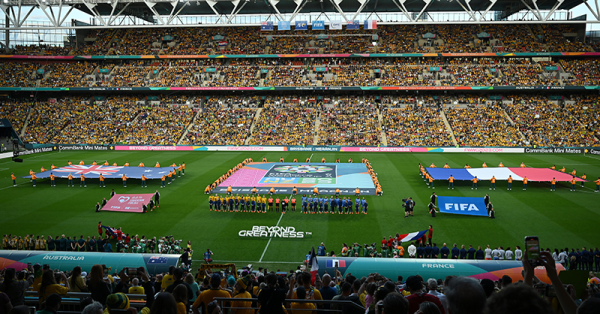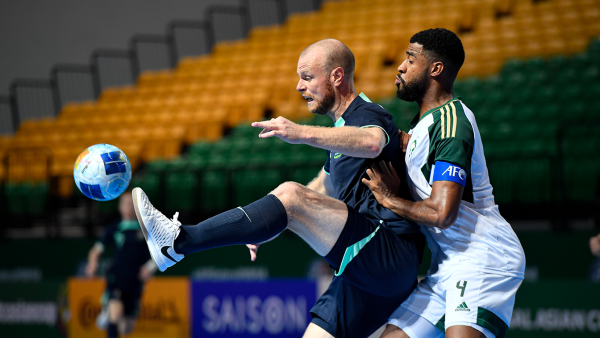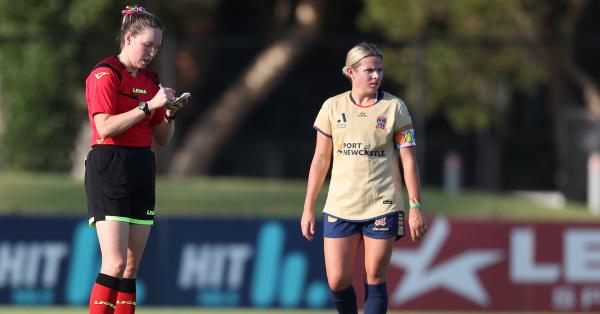Football Federation Australia (FFA) has released its Annual Review for 2018.
The review provides an insight to the FFA’s strategy, achievements, challenges, operations and finances for the past 12 months.
READ: Download the full FFA 2018 Annual Review here
FFA Chairman Steven Lowy AM said whilst the past 12 months have been challenging in some respects, the game has continued to see progress in so many areas, especially where it matters most – on the pitch.
“In my time as Chairman, we have established a four-year strategy that takes the first steps towards the targets established in the 20-year Whole of Football Plan. Notwithstanding the huge revenue gains made to date, the strategy addresses the immediate challenge that the game does not have sufficient revenue to realise its potential. Accordingly, activity which seeks to grow the revenue base of FFA has been prioritised,” he said.
Football Federation Australia Chief Executive Officer, David Gallop AM, said the 2018 Annual Review showed revenues flowing to the game have continued to grow.
“The financial results for the year show total operating revenues reached $132.5 million, up 25.5 per cent on the previous year.”
“An operating surplus of $43.5 million was an increase of 36 per cent on last year. This was distributed in grants, which increased to a record $43.9 million from $32 million in the prior year. After distributions, the operating result was a small deficit of $126,000.”
“The first year of a new six-year broadcast partnership with Fox Sports Australia contributed to a 25 per cent increase in operating revenue, enabling the record direct distributions of $43.9 million to Hyundai A-League and Westfield W-League clubs and Member Federations, an increase of 35 per cent on the previous financial year,” he said.
The increase in broadcast revenue was also good news for professional players, with an increased salary cap for the Hyundai A-League and a landmark two-year Collective Bargaining Agreement (CBA) for the Westfield W-League.
The Annual Review also provides an insight into the FFA Strategic Plan which is designed to secure the long-term goal of making football the biggest and most popular sport in Australia. In the shorter term, the strategy seeks to increase revenue growth to enable FFA to do more, as well as significantly increase the fan base of the Hyundai A-League and the Westfield W-League.
Mr Gallop said within the strategic plan, the Leading Pillar seeks to build alignment and unity of purpose among the game’s key stakeholders in pursuit of common objectives.
“The year was the first to see the new stakeholder funding model in operation, designed following the conclusion of the new broadcast agreement with Fox Sports Australia. The allocation of financial resources across the game is intended to underpin the development of the Hyundai A-League and Westfield W-League whilst growing the fan-base of clubs, whilst also supporting State/Territory Member Federations to improve the grassroots playing experience and expand player development pathways.”
“Increased distributions were made to Member Federations to underpin a high number of Skill Acquisition Phase participants nationally, provide technical support and establish the Community Services Fund. The total distribution to Member Federations increased from $5.4m in the 2016/17 financial year, to $6.6m in the 2017/18 financial year,” Gallop said.
The Participation pillar is focused on ensuring grassroots participants have a good experience in football, while inspiring families to become fans of the game.
In the 2017 calendar year 1.63 million participants were involved in football, a 22.5 per cent increase from 2016. Football continues to be the largest club-based participant sport in Australia, and ALDI MiniRoos is the largest 4-11 sporting program in Australia, with 223,138 participants playing football.
The FFA school strategy, launched in 2014, places Hyundai A-League and Westfield W-League Clubs at the shopfront in schools. This year, 83,000 children participated in Sporting Schools programs delivered by the professional club network, up from 53,000 the previous year. Football again remains the number one team sport within the Sporting Schools program.
Mr Gallop said major commitments to refresh football’s brand, deliver new digital services, improve participation experience and evolve the way fans consume the game were all key achievements in the entertaining pillar.
“In the first year of the new broadcast deal with Fox Sports, long-time partner SBS recommitted to football, becoming the official free-to-air broadcaster of the Westfield W-League.”
“We worked with our free to air partner Network Ten to build their audiences by scheduling marquee fixtures on Saturday evenings to give as much exposure as possible to our big games.”
“We also acknowledge that fans consume content differently, so this year we were proud to enter into a partnership with Telstra to launch the MyFootball Live app which allowed, for the first time, streaming of all Hyundai A-League, Westfield W-League and FFA Cup games live, as well as Caltex Socceroos and Westfield Matildas internationals. “
“A recommitment to securing marquees was a significant step forward in helping promote the game and helping to secure world class talent, we successfully partnered with Melbourne Victory to secure Japanese star Keisuke Honda and we invested with our broadcast partner Fox Sports to keep Westfield Matildas star Sam Kerr at Perth Glory,” he said.
The FFA’s winning pillar is focussed on development programs and competition opportunities which aims to increase the number of players within the pathway, increase the quantity of football hours and to improve the coaching environment.
Mr Gallop said this year FFA put clubs at the heart of the player pathway with Hyundai A-League, Westfield W-League and National Premier League clubs developing talented players, supported by Member Federations and FFA. In addition to this, Sydney FC, Western Sydney Wanderers FC and Central Coast Mariners were accredited as FFA 2 Star Club Academies joining Perth Glory, Newcastle Jets and Brisbane Roar FC. All six clubs have successfully transitioned into their respective local National Premier Leagues competitions.
He concluded by saying that 2019 will be an important year for the future of professional club football in Australia as a national working group is convened to explore a new leagues governance model.
“The new leagues model will need to address club owner considerations, guarantee rewarding careers for players, coaches and match officials, ensure that the overall funding model for the game is sustainable and optimised, and take into account the unique aspects of the Australian sporting landscape.
“FFA management has undertaken extensive work in preparation for this process and is ready to work in a constructive and collaborative fashion with all stakeholders to arrive at the optimal governance and operating model,” concluded Gallop.



